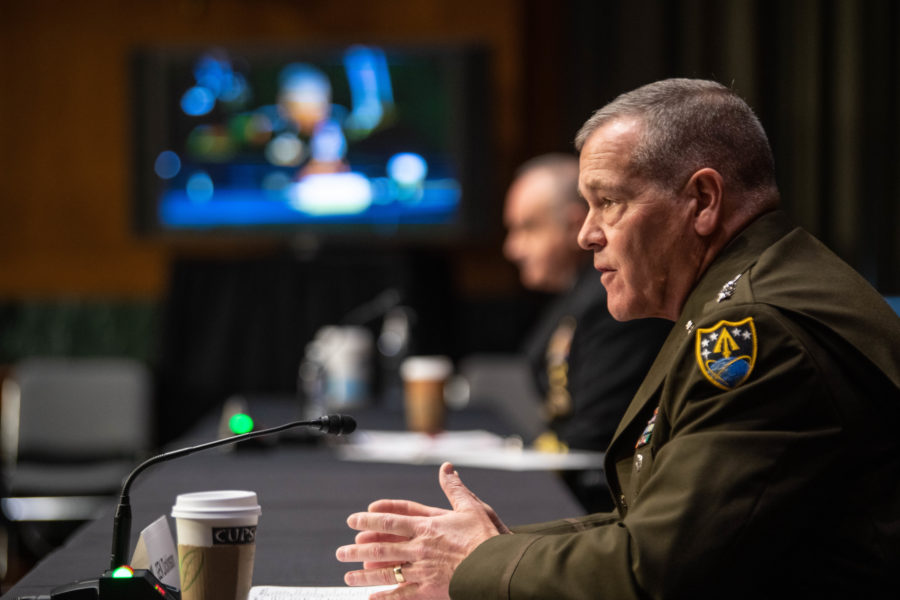The Russian test of an anti-satellite weapon system in 2021 gave the newly relaunched U.S. Space Command the chance to showcase its growing ability to perceive and understand the space domain, its commander Army Gen. James H. Dickinson said.
When the Russians launched a maneuverable kill vehicle atop a Nudol missile Nov. 15 and destroyed one of their own defunct spy satellites, “I was very pleased with how the command responded,” Dickinson told an audience online and in person at the Atlantic Council.
He highlighted the exercise of “space domain awareness”—the ability to perceive, locate, track, and interpret the intentions of moving objects in space. “We were able to detect and characterize and decide what had happened in a very, very short amount of time [and] … provide that type of information to our national-level leadership,” Dickinson said.
He credited “two years of hard work,” since U.S. Space Command stood up again in 2019 after a 17-year hiatus. He added that the time had been spent “developing processes [and] bringing talent into the command.”
Space Command is a combatant command, with its own area of responsibility, or AOR, that starts just above the atmosphere and extends outwards in all directions.
“Enhanced space domain awareness is my top mission priority,” Dickinson said, adding: “We spend an incredible amount of time trying to understand what we’re seeing in the space domain in terms of battle space awareness.”
Part of what made it so hard, he explained, was that the sensors the command was using were mostly not designed for space domain awareness but rather for missile defense or Earth observation. He said they had “exquisite” capabilities “that allow us to look into the space domain … And while they may not have been originally designed or invented for space domain awareness, that additional capability that they have has really been something we’ve been trying to leverage. And bringing that into an integrated architecture is a big challenge,” he said.
One issue was that missile defense and other traditional surveillance sensors were positioned to detect things launching from the surface rather than approaching from deep space, Dickinson said. But as NASA and commercial enterprises started to think about returning to the moon and even crewed voyages to Mars, it became clear that U.S. Space Command needs space domain awareness in deep space.
“That’s the challenge we have, is having the ability to look outward like that. Because, quite frankly, you know, if you look at our architecture, right now, we’re pretty good at looking down and in towards the Earth. We have to look at how we turn around and start looking outward,” he said.
One way to do that is by leveraging private sector capabilities, he said, which Space Command was doing through its commercial integration cell in Colorado Springs, Colo. “Space domain awareness from looking up terrestrially is all about location, location, location, right? So you have to have sensors in certain parts of the world where you can look up and see what we’re … interested in. And so being able to leverage the commercial market has been very powerful,” he said.
Engaging multiple commercial partners could augment U.S. Space Command’s own capabilities or allow it to focus on something else. “They’re looking at something that we don’t necessarily have to look at or decide on. And so we can look at something else instead.”
